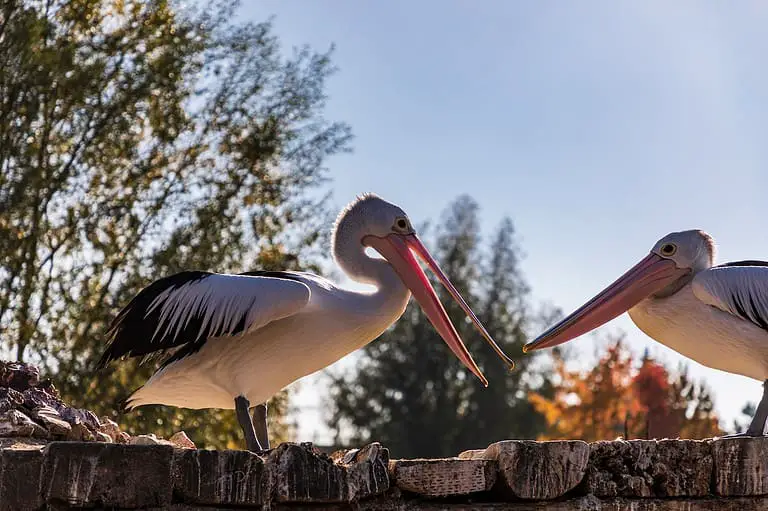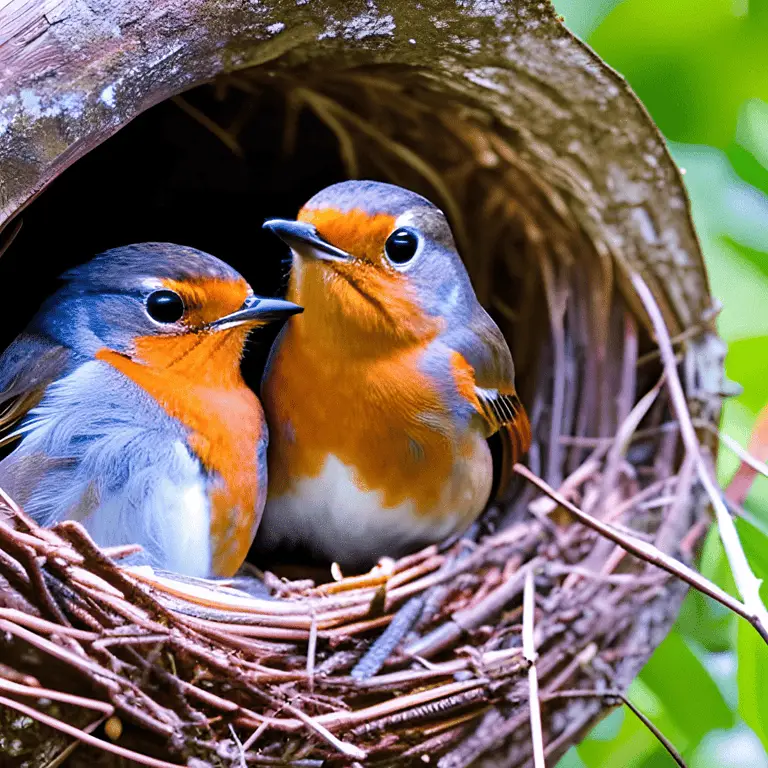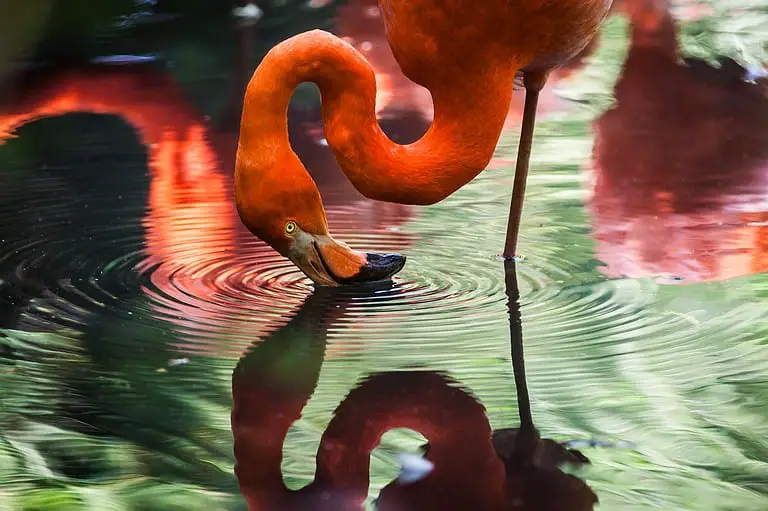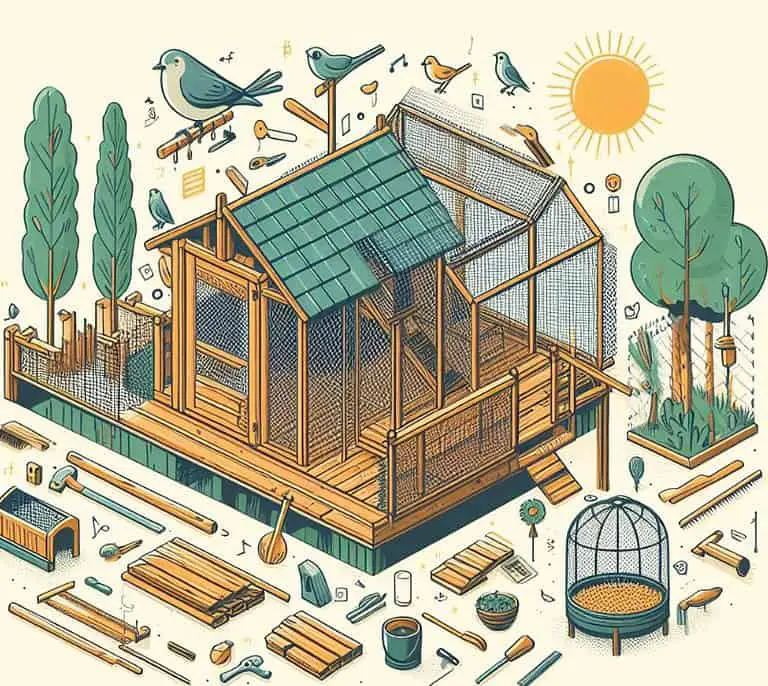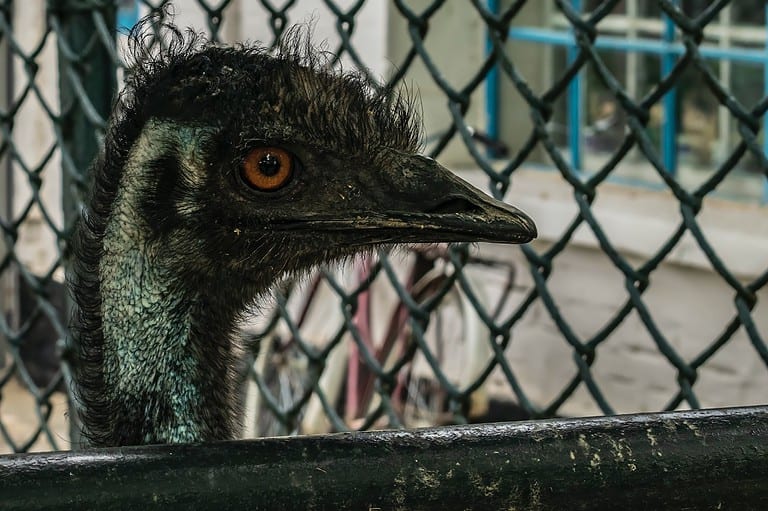Suspended Aviaries Explained
Suspended Aviaries Explained. As a bird enthusiast, I understand the importance of providing a comfortable and enriching habitat for my feathered friends. That’s why suspended aviaries have become increasingly popular in recent years. These unique habitats offer numerous benefits for both birds and their keepers.
Suspended aviaries provide ample space for birds to fly and move around freely, promoting their physical and mental health. Additionally, they allow for natural sunlight exposure and improved air circulation, which enhances the overall well-being of the birds.
In this section, we will dive deeper into the concept of suspended aviaries, explore the different types and components involved, and provide tips on constructing and maintaining an optimal suspended aviary for your birds.
Key Takeaways:
- Suspended aviaries provide a unique and beneficial habitat for birdkeeping.
- Birds in suspended aviaries have increased flight space and exposure to natural sunlight.
- Suspended aviaries promote the physical and mental health of birds.
- Choosing the right components and construction methods for a suspended aviary is crucial.
- Maintaining a suspended aviary involves proper cleaning, pest control, and enrichment activities.
Understanding Suspended Aviaries
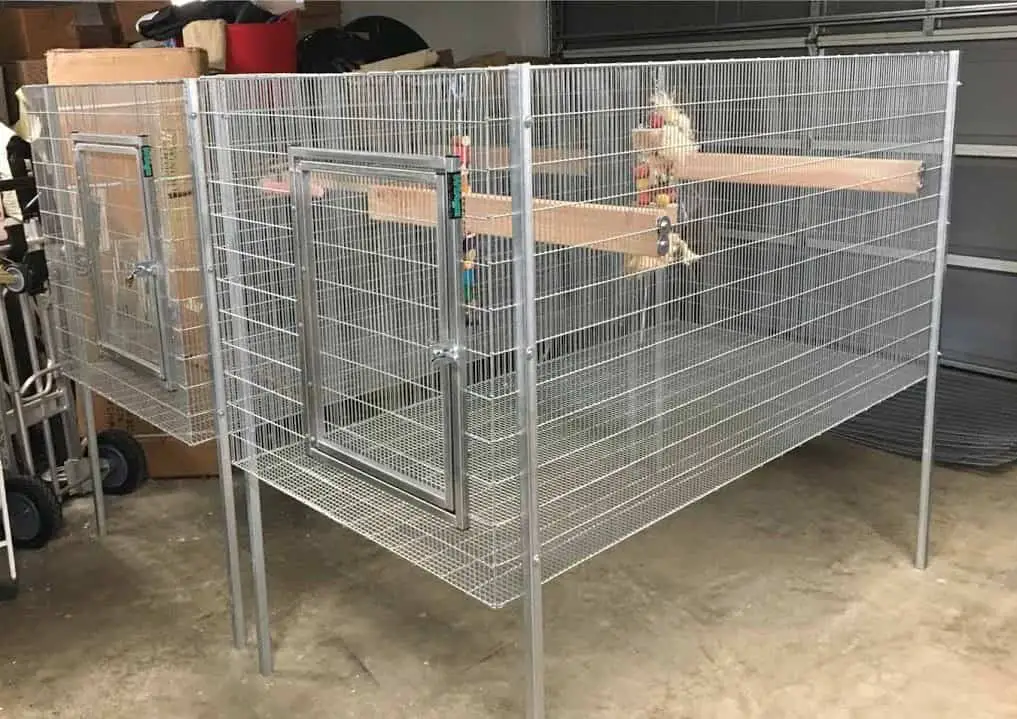
As a bird enthusiast, you may be familiar with traditional bird cages and outdoor aviaries, but have you considered a suspended aviary? These unique habitats offer numerous benefits for both the birds and their keepers.
Aviary Suspension Systems
Aviary suspension systems are essential for creating a suspended aviary. There are several types available, including pulley systems, chain systems, and even motorized systems. The best type for you will depend on factors such as the size and weight of your aviary, your budget, and personal preferences.
Benefits of Suspended Aviaries
The benefits of suspended aviaries are many. For one, they offer increased flight space for your birds, promoting healthy exercise and reducing the risk of obesity. Suspended aviaries also provide natural sunlight exposure, which is essential to a bird’s overall health and well-being. In addition, they allow for improved air circulation, which can help reduce the risk of respiratory infections.
For bird keepers, suspended aviaries offer many advantages as well. They can be more visually appealing than traditional cages, creating a beautiful focal point in your home or garden. Additionally, suspended aviaries can be easier to clean than traditional cages, as they are often designed with features such as removable trays and perches.
Overall, suspended aviaries are a unique and beneficial option for bird lovers. By utilizing an appropriate aviary suspension system and providing proper care and attention, you can create a comfortable and healthy environment for your feathered friends to thrive in.
Types of Suspended Aviaries
There are various types of suspended aviaries that you can consider for your feathered friends. Some of the most popular options are:
- Walk-in enclosures: These aviaries are designed to be large enough to walk into, allowing you to interact with your birds more easily. They can be freestanding or attached to a wall or ceiling, and are typically made from wire mesh or clear acrylic.
- Hanging cages: As the name suggests, these aviaries are suspended from the ceiling by chains or wires. They come in a variety of shapes and sizes, and can be made from materials such as wood, metal, or plastic. Hanging cages are a great option if you have limited space or want to create a unique visual display.
- Multi-level setups: These aviaries consist of multiple tiers or levels, connected by ramps or ladders. They provide plenty of room for your birds to fly and play, and can be designed to fit into almost any space.
When designing your suspended aviary, there are a few tips to keep in mind:
- Consider your birds’ needs: Different bird species have different requirements when it comes to living space. Make sure that your aviary is designed to meet the unique needs of your feathered friends.
- Use appropriate materials: The materials you choose for your aviary will have a big impact on its durability and functionality. Make sure to select materials that are safe for your birds and can withstand the rigors of daily use.
- Provide plenty of perches and hiding places: Birds need a variety of perches and hiding places to feel secure and comfortable in their environment. Incorporate plenty of natural wood branches, foliage, and other materials to create a stimulating and engaging space for your birds.
Constructing Suspended Aviaries
Constructing a suspended aviary requires careful planning and attention to detail. Here are some essential steps to follow:
- Determine the appropriate size and shape: The size and shape of your suspended aviary will depend on the number and size of birds you plan to keep. Consider the species’ flight capabilities and natural behavior when designing the dimensions of the enclosure.
- Select suitable materials: Choose high-quality materials that are safe, durable, and non-toxic for birds. Avoid using treated wood or metals that may rust or corrode. Stainless steel and powder-coated aluminum are popular choices for suspended aviaries.
- Design the suspension system: The suspension system should be sturdy enough to support the weight of the aviary and your birds. Steel cables or chains are often used to hang the enclosure from a secure structure, such as a ceiling beam or tree limb.
- Install the necessary components: Once the main structure is in place, install perches, nesting boxes, feeders, water dispensers, and other accessories appropriate for your bird species.
- Implement effective construction methods: Use appropriate tools and techniques to ensure a smooth and secure assembly. Anchor the suspension system to a solid surface, such as a concrete pad, to prevent swaying or swinging.
- Consider environmental factors: Be mindful of your bird’s natural habitat and the climate in your area. Install insulation and ventilation systems to maintain a comfortable temperature and adequate air circulation.
- Maintain the enclosure: Regularly inspect and maintain the suspended aviary to ensure the continued safety and well-being of your birds. Clean the enclosure and replace equipment when necessary.
Constructing a suspended aviary requires careful planning and consideration. By following these essential steps, you can ensure the successful construction of a functional and safe habitat for your feathered friends.
Components of Suspended Aviaries
When constructing a suspended aviary, it’s essential to consider all the components that make up a comfortable and functional environment for your birds. From perches to nesting boxes, each element plays a crucial role in promoting the health and happiness of your feathered friends.
Perches
Perches are a vital component of any aviary. They provide birds with a place to rest, exercise, and keep their claws well-trimmed. When choosing perches for your suspended aviary, it’s important to select a variety of shapes and sizes to promote natural movement and avoid foot problems.
Nesting Boxes
Nesting boxes are crucial if you plan to breed birds in your suspended aviary. They provide a secure and comfortable space for birds to lay their eggs and raise their young. Nesting boxes should be placed in a quiet and secluded area of the aviary to ensure privacy and reduce stress.
Feeders
Feeders are an essential part of any aviary. They provide birds with a constant source of food and prevent the mess that can come with scattering food on the floor. When selecting feeders, it’s important to choose ones that are appropriate for the size of your birds and easy to clean.
Water Dispensers
Water dispensers are also crucial for maintaining the health of your birds. They provide a constant source of fresh water and help prevent dehydration. When choosing water dispensers, it’s important to select ones that are easy to clean and suitable for the size of your birds.
Enrichment Activities
Enrichment activities are important for keeping your birds mentally stimulated and preventing boredom. These can include items like swings, ladders, and toys. It’s important to regularly rotate the items in your aviary to ensure continued interest and engagement from your feathered friends.
Advantages of Suspended Aviaries
As a bird lover, I have found that suspended aviaries offer numerous advantages over traditional bird cages or outdoor enclosures. Here are some of the benefits of choosing a suspended aviary:
- Increased Flight Space: Suspended aviaries provide birds with ample room to fly and exercise. Compared to traditional bird cages, which often confine birds to a limited space, a suspended aviary allows birds to move freely and perform natural behaviors such as stretching their wings and hopping from one perch to another.
- Natural Sunlight Exposure: Birds in suspended aviaries can benefit from natural sunlight exposure, which is essential for their health and well-being. Sunlight provides birds with important nutrients like vitamin D, which helps them absorb calcium and maintain strong bones.
- Improved Air Circulation: Suspended aviaries offer better air circulation than traditional bird cages, which can become stuffy and humid. Good ventilation is crucial for preventing respiratory problems and maintaining a healthy environment for birds.
- Enrichment Opportunities: Suspended aviaries allow birds to interact with their environment and engage in natural behaviors like foraging, exploring, and playing. Providing birds with opportunities for enrichment is important for their mental and physical well-being.
- Unique Design: Suspended aviaries can be designed in various shapes, sizes, and configurations, making them a unique and visually appealing addition to any home or outdoor space.
Overall, I believe that choosing a suspended aviary for your feathered friends can provide numerous benefits and create a comfortable and stimulating environment for them to thrive in.
Maintaining Suspended Aviaries
As a bird lover, you have invested time, effort, and expense into creating a suspended aviary that provides the best possible living conditions for your feathered friends. However, it is crucial to keep the aviary well-maintained to ensure the continued health and happiness of your birds.
“A clean environment is essential for a bird’s wellbeing, as birds are prone to respiratory problems”
The following are some tips for maintaining your suspended aviary:
Cleaning
It is essential to keep the aviary clean by removing droppings, food debris, and other waste daily. Depending on the number of birds you have, you may need to clean more frequently. Regular cleaning helps prevent the buildup of harmful bacteria and reduces the risk of disease.
You should also sanitize the entire aviary periodically using a safe disinfectant. Make sure to follow the product’s instructions carefully and always rinse the aviary thoroughly before returning your birds.
Pest Control
It is essential to keep pests such as mice and mites out of the aviary. Regularly inspect the aviary for signs of infestation, such as droppings, holes in the structure, or bird feathers lying around. If you notice any signs of pest infestation, act quickly to eradicate the problem, as pests can spread disease and pose a risk to your birds’ health.
Enrichment Activities
Providing enrichment activities for your birds is crucial to keep them mentally and physically stimulated. You can provide toys, perches, and swings. You can also arrange natural branches and plants, which not only provide a source of entertainment but also simulate the birds’ natural environment.
Regular Vet Checks
Finally, it’s always a good idea to have your birds checked regularly by a trusted veterinarian. They can identify any potential health problems and provide advice on how to keep your birds healthy and happy.
By following these simple tips, you can enjoy the benefits of a suspended aviary for years to come while providing your birds with a comfortable and safe home.
Conclusion
In conclusion, as a bird enthusiast, choosing a suspended aviary offers a unique and beneficial housing option for your feathered friends. By understanding the different types of aviary suspension systems available, the construction methods, and components involved, you can create an optimal suspended aviary that promotes the health and happiness of your avian companions.
Suspended aviaries provide increased flight space, natural sunlight exposure, and improved air circulation, and this makes them an ideal option for birdkeeping. Walk-in enclosures, hanging cages, and multi-level setups are some of the types of suspended aviaries that you should consider.
Constructing a suspended aviary requires using appropriate materials, determining proper dimensions, and implementing effective construction methods. You should also ensure that the aviary has all the essential components, including perches, nesting boxes, feeders, and water dispensers.
To maintain a suspended aviary, regular cleaning, pest control, and providing appropriate enrichment activities are essential. You should always ensure that your feathered friends are in a comfortable and functional space.
In summary, suspended aviaries offer a unique and beneficial habitat for birds. By familiarizing yourself with the concept of suspended aviaries and adhering to the tips outlined in this article, you can create a comfortable and functional space for your feathered friends.
Thank you for reading!
FAQ
What are suspended aviaries?
Suspended aviaries are unique habitats that provide a beneficial environment for birds. They are designed to be suspended above the ground or floor, allowing birds to have increased flight space and natural sunlight exposure.
What are the benefits of suspended aviaries?
Suspended aviaries offer several advantages. They provide birds with more room to fly and engage in natural behaviors. They also allow for better air circulation, improved sunlight exposure, and easier maintenance compared to traditional bird cages or outdoor enclosures.
What are the different types of suspended aviaries?
There are various types of suspended aviaries, including walk-in enclosures, hanging cages, and multi-level setups. Walk-in enclosures provide a large space for birds to move around, while hanging cages are suspended from the ceiling. Multi-level setups offer vertical space for birds to explore.
How do I construct a suspended aviary?
Constructing a suspended aviary involves selecting suitable materials, determining proper dimensions, and implementing effective construction methods. It is important to ensure the aviary is secure, well-ventilated, and provides adequate protection from predators.
What components should I consider for my suspended aviary?
Essential components of a suspended aviary include perches, nesting boxes, feeders, water dispensers, and appropriate enrichment activities. These components contribute to the comfort and functionality of the aviary, providing birds with a safe and engaging environment.
What are the advantages of choosing a suspended aviary?
Suspended aviaries offer numerous advantages. They provide birds with increased flight space, allowing them to exercise and engage in natural behaviors. Suspended aviaries also offer better air circulation and natural sunlight exposure, leading to improved physical and mental well-being for the birds.
How do I maintain a suspended aviary?
Proper maintenance of a suspended aviary is crucial for the well-being of your birds. This includes regular cleaning of the aviary, implementing pest control measures, and providing appropriate enrichment activities to keep the birds mentally stimulated and physically active.
>H3>Q: Why should I consider a suspended aviary for my birds?
Suspended aviaries offer a unique and beneficial housing option for bird lovers. They provide birds with a more natural and spacious environment, allowing them to thrive both physically and mentally. Additionally, suspended aviaries offer easier maintenance and better air circulation compared to traditional bird cages or outdoor enclosures.


